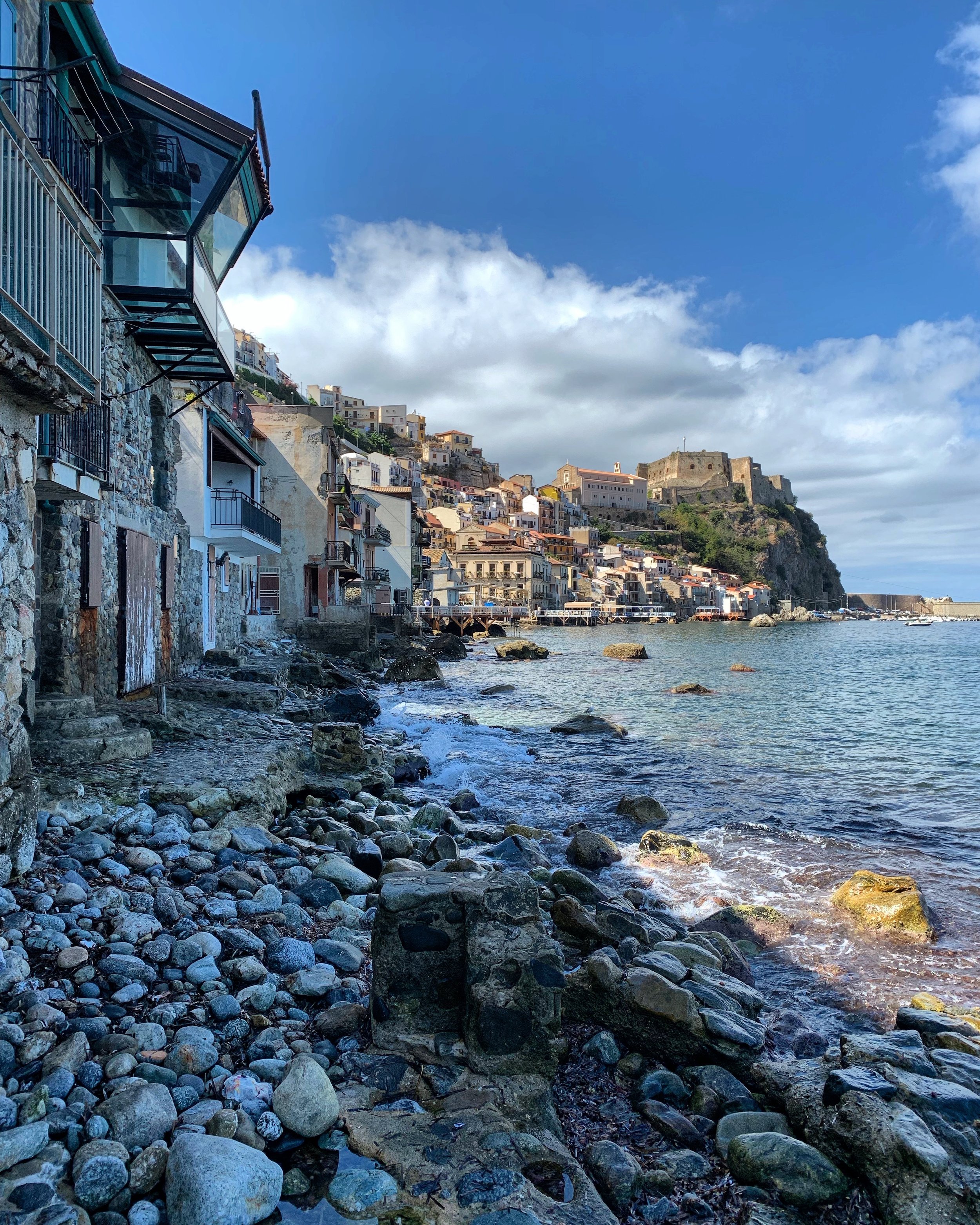Scilla and Chianalea
This is Chianalea. (The neighboring village to Scilla.) These are literally the back yards of private residences along the coast.
Scilla is flooded with ancient history from Tyrrhenian pirates, Trojan wars, Greek legends and swordfish. Lots and lots of swordfish!
Scilla has ancient origins that relate mainly to the period of the destruction of Troy and myths and legends of Odysseus with Scylla, of Homer’s classical poems. The town’s name derives from the mythological figure of Scylla, a young nymph who refused Glauco’s love. Glauco went to the sorceress Circe, who was in love with him, and asked her to help him win Scylla’s heart. The offended sorceress poisoned the sea-pool where the nymph used to bathe, turning her into a horrific six dog-headed monster who destroyed every ship crossing. Scylla is said to live in the rock of Scilla, which the Castello di Ruffo currently sits on. It’s also one of many sights where we stroll and take lots and lots of pictures.
A local fishing boat parked on the rocky shores of Scilla.
Parking one’s fishing boat outside one’s house is quite common throughout Scilla. See it as the same as a private parking garage for cars here. Same concept. Different vehicle.
Aside from the ancient history of this place, it’s still a very active fishing village where swordfish is all the rage. Many restaurants line the coast with seafood being the main appetizer, primo and secondo.
We dined at one of the restaurants there one afternoon situated right on the Strait of Messina with Stromboli and Sicily in the distance. Fishing season, which involves catching the Mediterranean swordfish, occurs every May where fishermen (who still sing old fishing folk songs in their native Scillese tongue) set out to catch the meaty fish for themselves, to preserve as well as to sell fresh to markets and restaurants throughout all of Italy and abroad.




